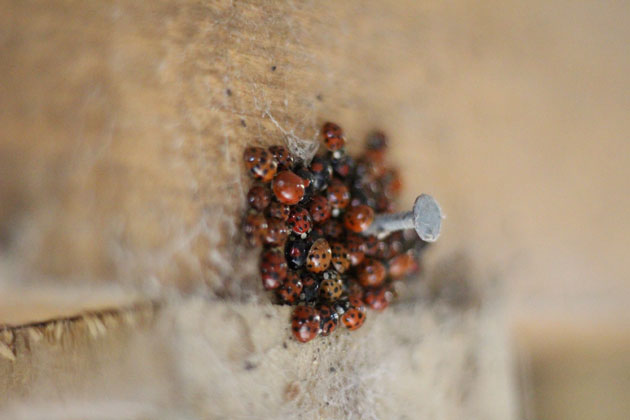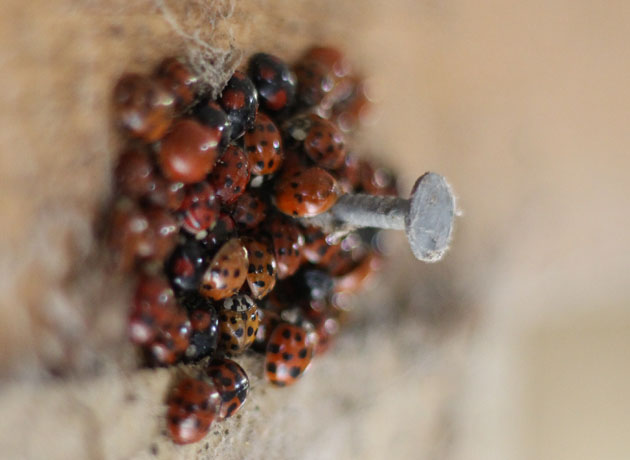A Loveliness of Ladybirds

As a result of the clocks going back I discover that the collective name for Ladybirds (Ladybugs, Ladybeetles) is a Loveliness.
A Loveliness
I’m sure I should have known this, it seems so obvious now! And perfect!
I clambered up into the rafters at the workshop to alter the clock hands, back one hour to mark the end of British Summer Time, and behind it, clustered around the nail it hangs on, was the Loveliness.
They’ve obviously chosen this place to hibernate. Ladybirds live for about a year, so these ones must be grown from eggs laid this spring, which have fed and matured over the summer to adult size. They will overwinter – hopefully in my workshop – to go forth and multiply come next spring.

It is lovely to have little surprises like this, confirmation that any effort we can make to be wildlife friendly works, is worth it and rewarded tenfold (sevenspotfold!).
If you’d like your own Loveliness, the best way is to avoid using chemicals in your garden, and provide Ladybirds with somewhere to hibernate. Ordinarily they like evergreen trees where they tuck themselves away in cracks on the trunks. Ivy is another popular location, particularly where ivy grows tightly around a tree trunk or even up against a house. But as you can see, a shed might also be used.
It surprises me that they haven’t been hindered by the clock ticking noise – or maybe that is what attracted them!
Happy end of summertime. And happy hibernation.

4 Comments
what a cool surprise!
Rather wish I was hibernating too – it has gone mighty cold here!
I would love to know when ‘lovelines’ started to be used for a collective noun of ladybirds. I was brought up that a group is called a ‘bloom’, it was that since 1486 when it was printed in a book called ‘The Book of Hawking, Hunting and Blasing of Arms’ which is where we get almost all collective nouns for animals.
I’ve heard them called a bloom too – sounds to be a fascinating book – I’m afraid I don’t know the answer to your question though